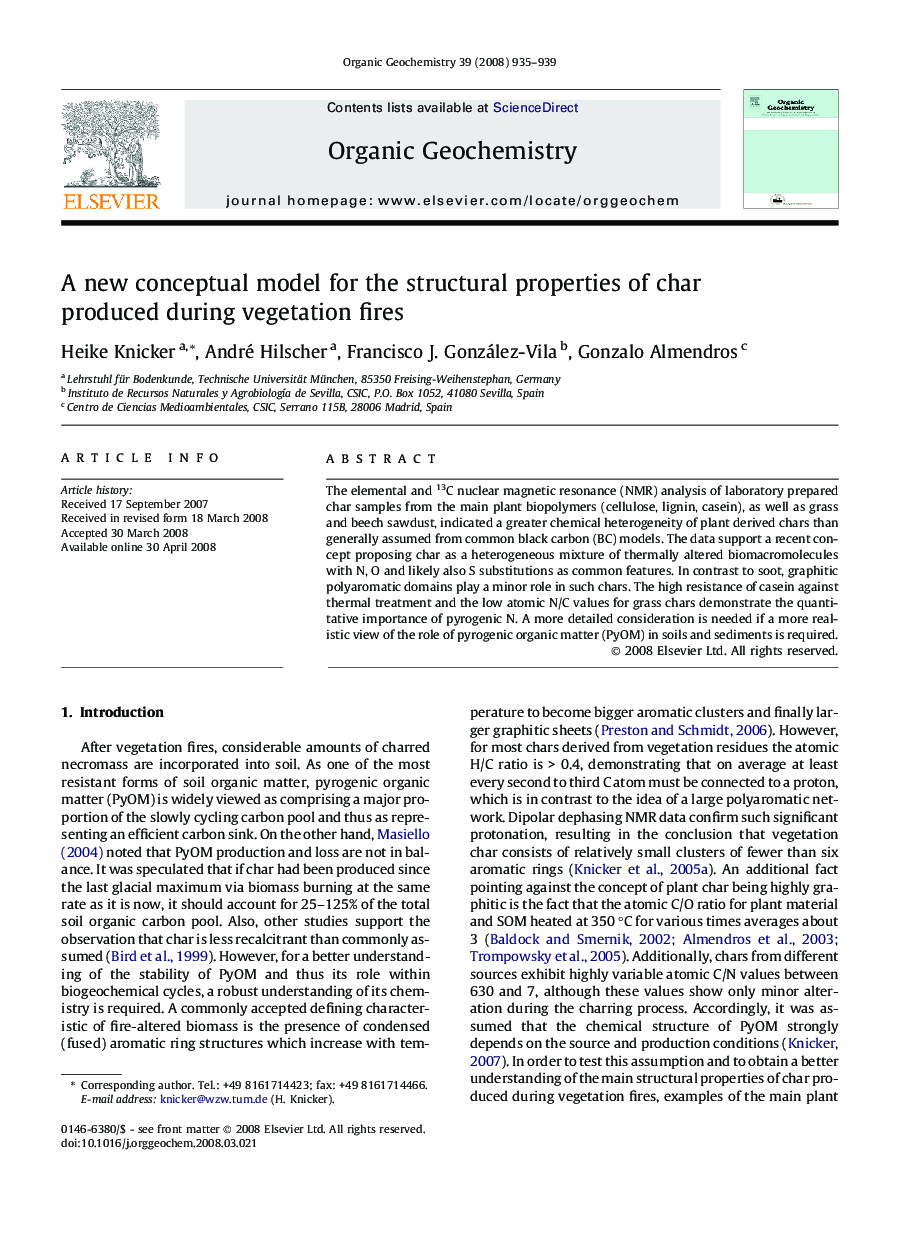| Article ID | Journal | Published Year | Pages | File Type |
|---|---|---|---|---|
| 5161980 | Organic Geochemistry | 2008 | 5 Pages |
Abstract
The elemental and 13C nuclear magnetic resonance (NMR) analysis of laboratory prepared char samples from the main plant biopolymers (cellulose, lignin, casein), as well as grass and beech sawdust, indicated a greater chemical heterogeneity of plant derived chars than generally assumed from common black carbon (BC) models. The data support a recent concept proposing char as a heterogeneous mixture of thermally altered biomacromolecules with N, O and likely also S substitutions as common features. In contrast to soot, graphitic polyaromatic domains play a minor role in such chars. The high resistance of casein against thermal treatment and the low atomic N/C values for grass chars demonstrate the quantitative importance of pyrogenic N. A more detailed consideration is needed if a more realistic view of the role of pyrogenic organic matter (PyOM) in soils and sediments is required.
Related Topics
Physical Sciences and Engineering
Chemistry
Organic Chemistry
Authors
Heike Knicker, André Hilscher, Francisco J. González-Vila, Gonzalo Almendros,
